What are the differences between beetle larvae and bear larvae?
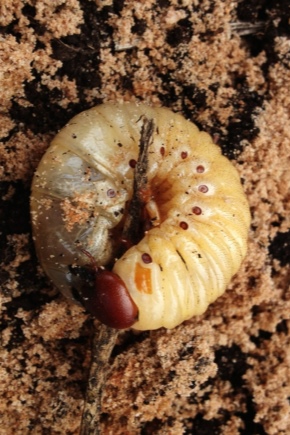
Spring is a very important period of the year for any summer resident. Preparation of the site for sowing work, digging of land begins. This is where you can unexpectedly stumble upon some fat white-brown worms or other strange insects that have the clear intention of sharing the harvest with you. Some of the most dangerous garden pests are bears, as well as beetles, they are also May beetles. In order to choose the most effective remedy for dealing with these unwanted guests, you must first figure out whose larva is in front of you: a crustacean or a bear.

What do they look like?
First, let's talk a little about what the adults of the aforementioned insects look like. Medvedka (cabbage, mole cricket, earth crayfish) is a rather large insect. The length of the body of an adult can reach up to 8 centimeters, and if we take into account the tail and antennae, then up to 12. The appearance of the parasite is unusual. Above its body has a brownish-brown color, below it is yellowish-brown. The head and front of the body are covered with a strong chitin shell, which helps the animal to push and compact the soil when digging holes and tunnels.
The eyes of the bear are large, faceted, located on the sides of the head. On the back of the cabbage, you can see 2 pairs of wings. Perhaps the most noticeable feature of this animal is its front legs, massive and clawed, reminiscent of either an excavator bucket or the digging paws of a mole.
Thanks to this feature, the bear is able to literally cut its way through the soil.
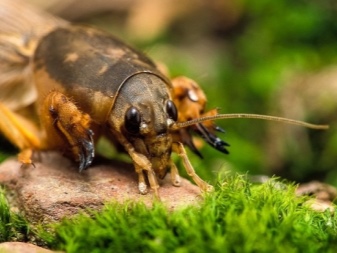

Now let's talk about the appearance of an adult May beetle. Its body has a barrel-shaped structure and a strong external chitinous skeleton, the color varies from dark brown to black. The elytra are hard, chocolate or yellow. On a medium-sized head, fan-shaped lamellar antennae and large eyes are distinguished.
The body length of an adult beetle can reach 3.5 cm.
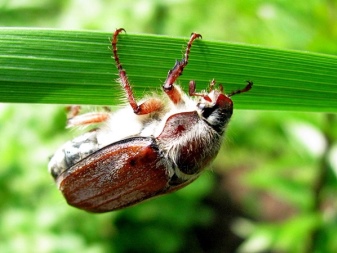
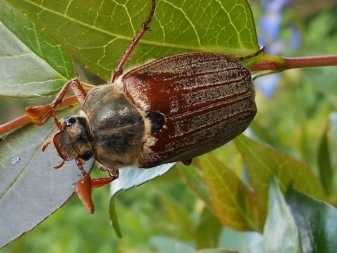
Now let's move on to describing the "children" of these two insects in order to see with our own eyes the differences between the beetle larva and the bear larva.
- The "cub" of the bear looks almost identical to the adult. In its development, there are no stages of caterpillar, pupation and butterfly. The body of a newly born cabbage can reach a length of 0.3 cm, by the end of formation it reaches 5 cm, and an adult insect, as we mentioned above, can grow up to 8 cm, or even more.
- The larvae of the beetle differ dramatically from the individual in the imago stage. They are fatty yellowish-white worms bent into a half-ring. Their head is reddish-brown in color, equipped with a well-developed gnawing apparatus, and there are no eyes. There are 3 pairs of paws next to the head. The body is translucent, the remnants of digested food are clearly visible in it. It seems to consist of segments, on the sides of each of which you can see dark dots.
As follows from the description, it is impossible to confuse the beetle larva and the bear larva: they look completely different.
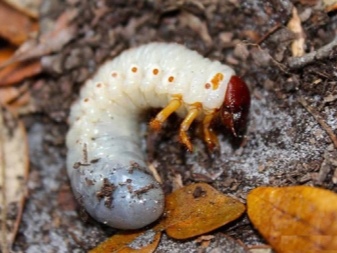

Development difference
But not only the appearance is the hallmark of these insects. Their developmental features also differ.
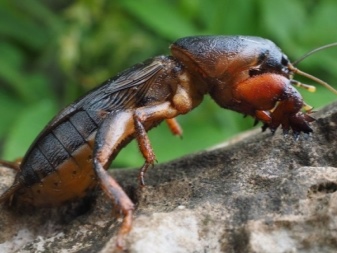
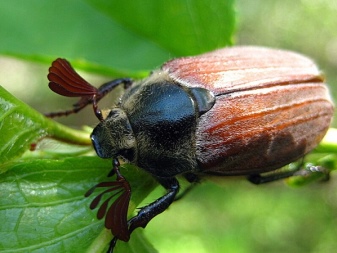
Medvedki
Consider how the larvae of the most unpleasant creatures for gardeners develop.
- The mating season is usually in May. At the end of it, the female cabbage begins to equip the nest.To do this, they choose fertile soil, dig holes at a depth of 5 to 15 cm (if a soil with a predominance of sand is chosen, the hole will be located deeper - about 70 cm).
- When the nest is ready, the bear lays 400-500 eggs. They look like elongated grains 0.1-0.3 cm long. The eggs are brownish-yellow or beige. A considerable number of eggs contributes to an increased degree of survival of individuals.
- In order for the babies to hatch, it is necessary to have favorable factors: the supply and circulation of air, a sufficient degree of humidity, and a positive temperature. In order to avoid damage to the clutch with mold, the mother bear turns the eggs from time to time.
- After 14-21 days, small larvae appear, similar to adult cabbage cabbage. Their body reaches 0.3 cm in length and has a brownish-reddish tint.
- Babies feed on the remains of egg shells, as well as maternal saliva.
- After about a week, the little bears molt, as they grow a little. In total, they transfer 5-10 molts until they reach the imago stage. To do this, they need 1.5-2 years.
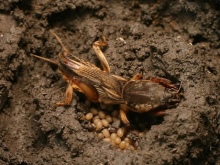

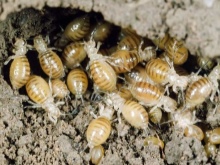
May beetles
The development of crustaceans looks a little different.
- The mating season of these Coleoptera representatives is in the spring. After fertilization, the females penetrate deep into the soil (from 15 cm to a meter), build nests and lay eggs there (about 70 pcs.). All this consumes the vital forces of the insect, which, having fulfilled its duty, dies.
- After a month, larvae hatch from the clutch. We described their appearance earlier.
- The caterpillar pupates after the third wintering. This stage of development takes a little over a month. And all the way from larva to imago takes 3 years.
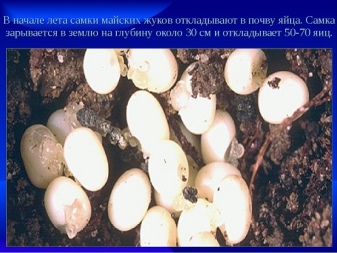
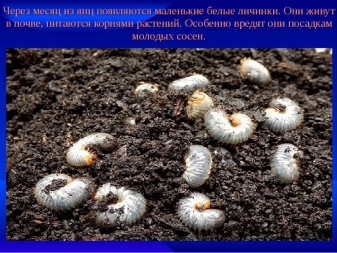
How else are they different?
It is not difficult to distinguish the "cubs" of the bear and the beetle by their appearance. As we managed to find out, the development of these individuals also has significant differences. Now we should compare the features of their diet and habitat.
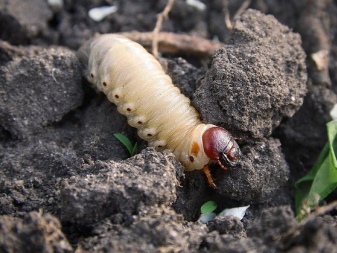
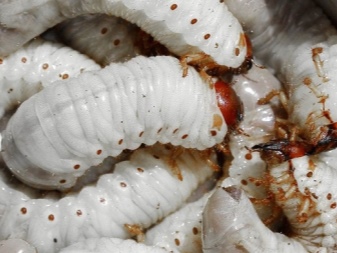
Nutrition
To begin with, small bears and beetle larvae initially cause completely different damage to agricultural land. Little Bears almost from the moment they are born begin to eat whatever they like. In the first couple of years, the beetle larvae do not harm at all, and only in the third year of life (when approaching the pupation stage) they are attacked by zhor, and then they eat everything that comes their way.
If we talk about the taste preferences of individuals of both species, they are as follows.
- Cabbage larvae focus on the roots of legumes, nightshades and melons, and they do not disdain plant seeds. They suffer from potatoes and sugar beets, cabbage and eggplant, cucumbers and onions, as well as garden trees: apple trees, apricots, plums.
- The beetle larvae parasitize on the roots of trees. They especially love apple, cherry, thuja, larch, spruce, and also destroy the root system of currants, strawberries, strawberries, corn. They love potato tubers. A mature 3-year-old larva can completely destroy the roots of an adult pine in 24 hours.
By the way, the bear, as it grows, switches to animal food: it eats earthworms, grubs, the Colorado potato beetle and the ladybug.
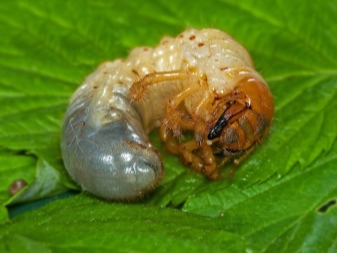
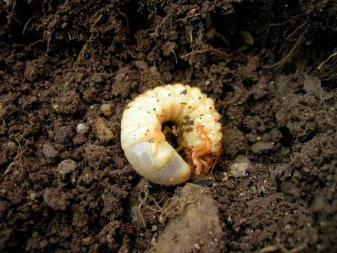
Habitat
The favorite habitat of the cabbage is wet soils: river floodplains, meadows, irrigation canals, wetlands. Since they live underground and love warmth, it is important for them that the soil warms up well, is loose, well-flavored with humus. These insects are very loyal to dung heaps.
The beetle larvae are also thermophilic. They like well-groomed, clean-weeded garden plots. They often hibernate in compost heaps. They are very sensitive to cold: at air temperatures below -3 degrees, they die.


Let's draw a few conclusions:
- both the bear and the beetle are harmful insects, which means that you need to be able to deal with them and recognize them at the earliest stages of development;
- the bear larva looks like a small copy of an adult, only its color is slightly paler, and the shell is not so strong; the larva of the May beetle is absolutely not like an imago, let alone a bear: it is a fat white worm with a red head and a dark back part;
- "Children" of Khrushchev are more thermophilic creatures, therefore they are buried in the ground to a greater depth than bears, therefore, it is more difficult to detect them;
- both those and other insects (both larvae and adults), when found, must be collected by hand and destroyed, although traps and insecticides can also be used;
- if you find a clutch in the soil, consisting of transparent or dark beige eggs, immediately destroy it, since in the first case it will most likely be a clutch of beetle, in the second - a bear.
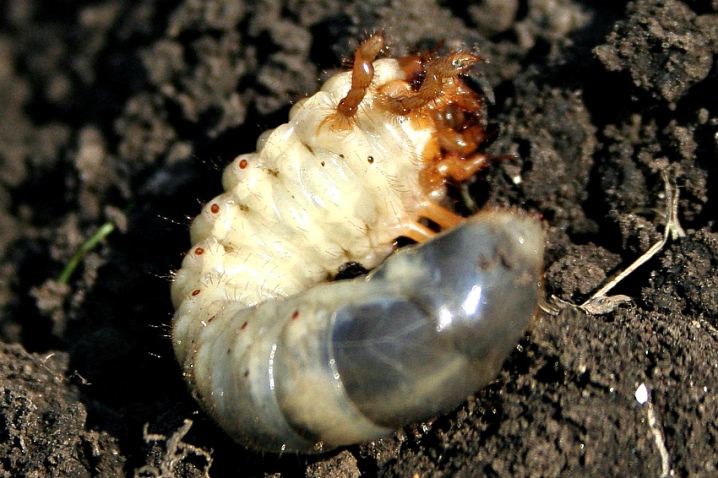













The comment was sent successfully.